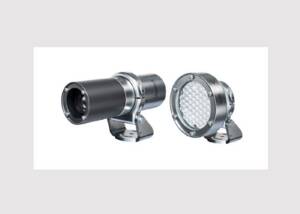UPM Financial Statements 2020: A positive finish to an exceptional year
News General news
UPM Financial Statements 2020:
A positive finish to an exceptional year – transformative growth projects on budget and on schedule

Q4 2020 highlights
- Sales decreased by 11% to EUR 2,188 million (2,447 million in Q4 2019) due to lower pulp prices and lower deliveries and prices of graphic papers
- Comparable EBIT was EUR 252 million, 11.5% of sales (343 million, 14.0%), down 27% year-over-year
- Operating cash flow was EUR 347 million (592 million)
- Successful health and safety measures enabled uninterrupted business operations and progress in transformative growth projects
- The year ended on a positive note, with good demand for UPM’s products
- UPM issued a EUR 750 million Green Bond under the EMTN programme
- UPM was listed as the industry leader in the Dow Jones Sustainability Indices (DJSI) and received a triple ‘A’ score from CDP for outstanding environmental performance
- UPM moves forward with biofuels growth plans and starts the basic engineering phase of a next-generation biorefinery
2020 highlights
- Sales decreased by 16% to EUR 8,580 million (10,238 million in 2019) due to lower deliveries of graphic papers and lower pulp and paper prices
- Comparable EBIT was EUR 948 million, 11.1% of sales (1,404 million, 13.7%), down 32% year-over-year
- Operating cash flow was EUR 1,005 million (1,847 million)
- Net debt was EUR 56 million (-453 million)
- Cash funds and unused committed credit facilities totalled EUR 3.2 billion at the end of 2020
- The Board proposes a dividend of EUR 1.30 (1.30) per share
- The COVID-19 containment measures significantly decreased demand for graphic papers, while UPM Raflatac and UPM Specialty Papers achieved record earnings
- UPM's transformative pulp project in Uruguay and biochemicals project in Germany are well on track with the planned start-up timeline
- Closures of UPM Kaipola and UPM Chapelle paper mills and UPM Jyväskylä plywood mill, streamlining in several businesses and functions
Jussi Pesonen (photo), President and CEO, comments on the Q4 and 2020 full year results:
“In 2020, the global pandemic and related lockdowns caused an abrupt and severe economic shock that put all societies and businesses to the test. With decisive measures we ensured the safety of UPM employees and the satisfactory performance of the company. Our growth projects proceeded as planned.
The year ended on a positive note. In the fourth quarter, the demand for our products was good. Sales of EUR 2,188 million and comparable EBIT of EUR 252 million were higher than on the two previous quarters, although considerably down from the corresponding quarter of 2019.
The star performers of the quarter, as for the whole year, were UPM Raflatac and UPM Specialty Papers. These business areas benefited from favourable markets and changes in consumer behaviour, e-commerce and retail. Both businesses had taken commercial and efficiency measures to improve profitability and started the year with already improved margins.
In UPM Biorefining the demand for pulp, renewable fuels and timber was good. China is leading the demand growth in the pulp market. Market prices for pulp have been at a low level for quite some time, and the first price increases during the fourth quarter were offset by changes in currencies. Two extensive pulp mill maintenance shutdowns pushed the quarterly results down to break-even.
The performance of UPM Communication Papers in the last quarter was better than the two previous quarters due to seasonally low energy costs and higher year-end demand. However, the market demand for graphic papers was down 14% year-over-year. The closure of UPM Kaipola paper mill in Finland was finalised at the beginning of 2021 and the sales process of UPM Shotton paper mill in Wales is ongoing. The measures taken were timely and necessary for the efficiency and competitiveness of the business.
Excellent hydrological conditions continued, and UPM Energy again delivered strong earnings. Energy prices decreased, both during the quarter and on a yearly basis. In UPM Plywood, demand continued to be good in construction end-uses, but on a low level in industrial end-uses. The markets remained highly competitive.
In 2020, the exceptional shortfall in graphic paper demand due to COVID lockdowns and unusually low pulp prices had a clear impact on our earnings. At the same time, I am very proud of the spectacular performance of our specialty packaging materials businesses, UPM Raflatac and UPM Specialty Papers.
Our sales decreased by 16% in 2020, and comparable EBIT was down 32% year-over-year. Operating cash flow decreased to EUR 1,005 million from the all-time high of the previous year. Our financial standing remains very strong with net debt close to zero and cash funds and unused committed credit facilities totalling EUR 3.2 billion at the end of 2020.
During a year of high uncertainty our focus was clear: ensure the performance of all our operations and at the same time secure the successful implementation of our strategic growth projects. We took several measures to decrease fixed costs, which are expected to result in annual savings of approximately EUR 130 million. Our two major growth projects in Uruguay and in Germany are on schedule and on budget.
The year 2021 will be an important year of construction and preparation for the projects in Paso de los Toros in Uruguay, and in Leuna, Germany. The construction sites in Uruguay are currently employing 3,000 workers and the number will double later this year. The construction of the biochemical refinery in Germany began during Q4. Simultaneously, we are setting up the business for the eventual market entry. During the most intensive year of these projects, UPM’s total capital expenditure is expected to be EUR 2 billion.
Our transformation does not stop there. Today we announced the next step to advance our biofuels growth plans. We are starting the basic engineering phase of a next-generation biorefinery with an annual capacity of 500,000 tonnes of high-quality renewable fuels. The planned biorefinery would scale up UPM’s successful biofuels business to a new level. At the same time, it would further improve the long-term competitiveness and sustainability performance of UPM Biofuels by introducing several sustainable feedstocks and achieving uniquely high CO2 reduction compared to biofuels currently on the market.
With its Biofore strategy UPM is well positioned to respond to global megatrends and growing demand for renewable products. We enable our customers and consumers to make more sustainable choices. Our purpose is to create a future beyond fossils.
Sustainability is at the core of everything we do. In 2020, we committed to the UN Business Ambition for 1.5°C and to the science-based measures to mitigate climate change. We were recognised as a UN Global Compact LEAD company, listed as the industry leader in the Dow Jones European and World Sustainability Indices (DJSI), and received a triple ‘A’ score from CDP for outstanding environmental performance. We also established a Green Finance Framework and issued our first Green Bond. Our syndicated revolving credit facility is also linked to biodiversity and climate targets.
In the coming quarters, we will do our utmost to ensure business continuity and performance as well as secure safe and successful implementation of our major growth projects. Even though there are some signs of recovery, the pandemic is not over yet.
Confident with our financial position and future cash generation, UPM’s Board of Directors has today proposed a dividend of EUR 1.30 (1.30) per share for 2020."
Outlook for 2021
The global economy is expected to start recovering in 2021 from the deep downturn experienced in 2020. World regions will progress at different pace, and China is leading this development. Demand for most UPM products is influenced by overall economic activity and hence, depends on the shape and rate of the economic recovery.
The COVID-19 pandemic continues to cause significant uncertainty in 2021. In 2020, lockdowns had a significant negative impact on graphic paper demand but supported the strong demand for self-adhesive labelling materials and specialty papers. Opening of the economies is likely to allow for some normalisation of these demand impacts. However, further waves of the pandemic and related lockdowns remain possible.
In the beginning of 2021, pulp prices are expected to increase compared with Q4 2020. Paper prices are expected to decrease moderately, compared with Q4 2020.
UPM will continue to implement measures to decrease fixed and variable costs.
UPM’s comparable EBIT in H1 2021 is expected to be lower than in H1 2020, due to lower paper prices and higher maintenance activity. Comparable EBIT is expected to recover in H2 2021.










